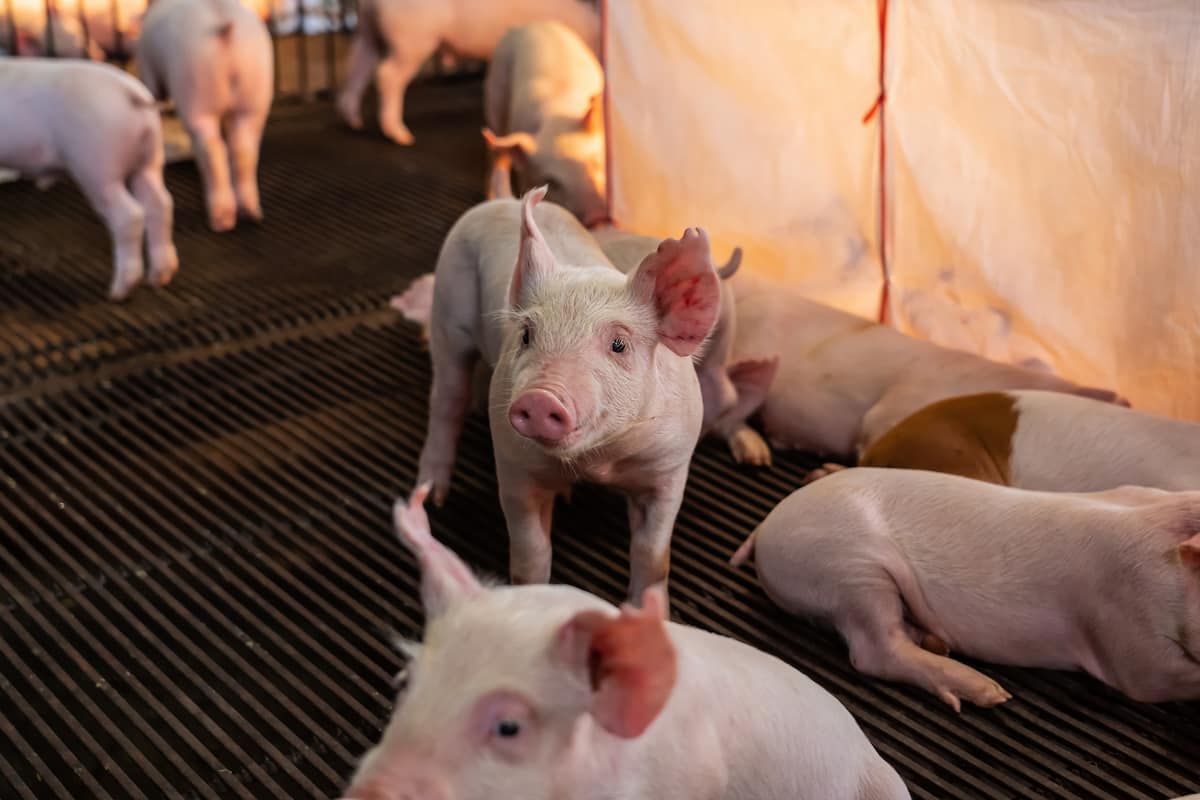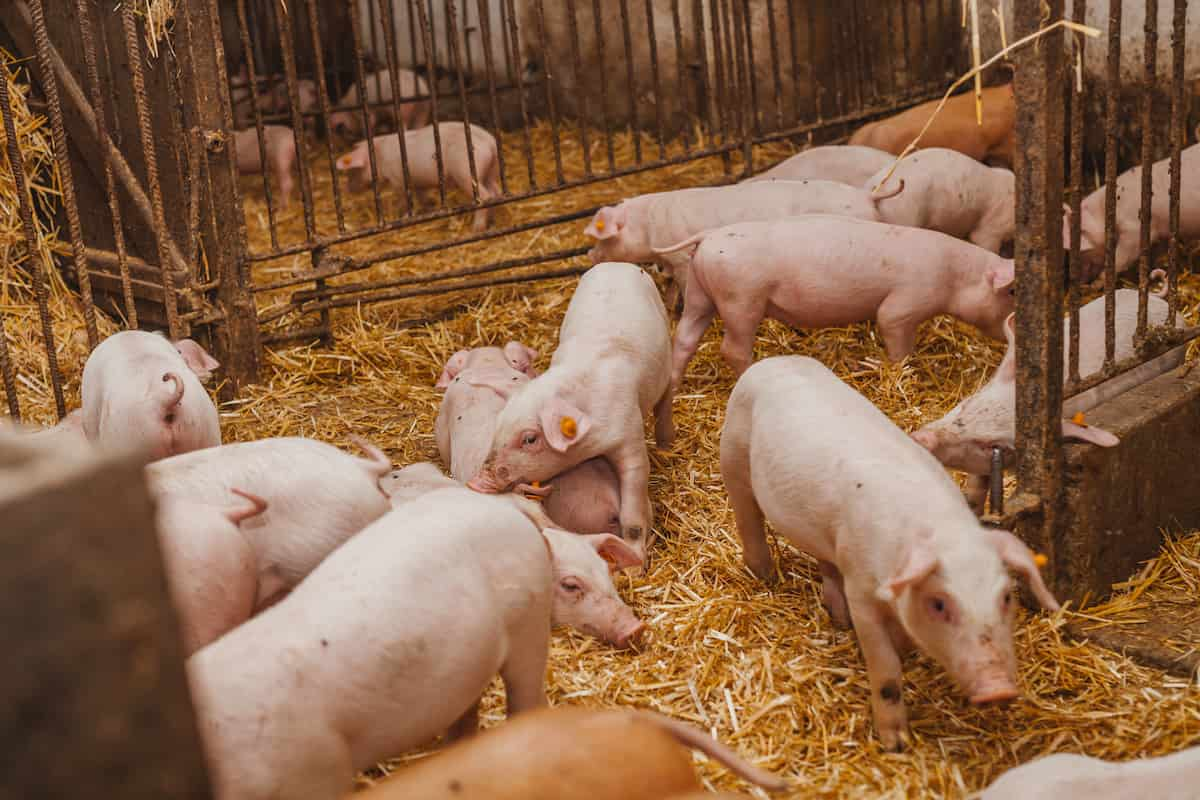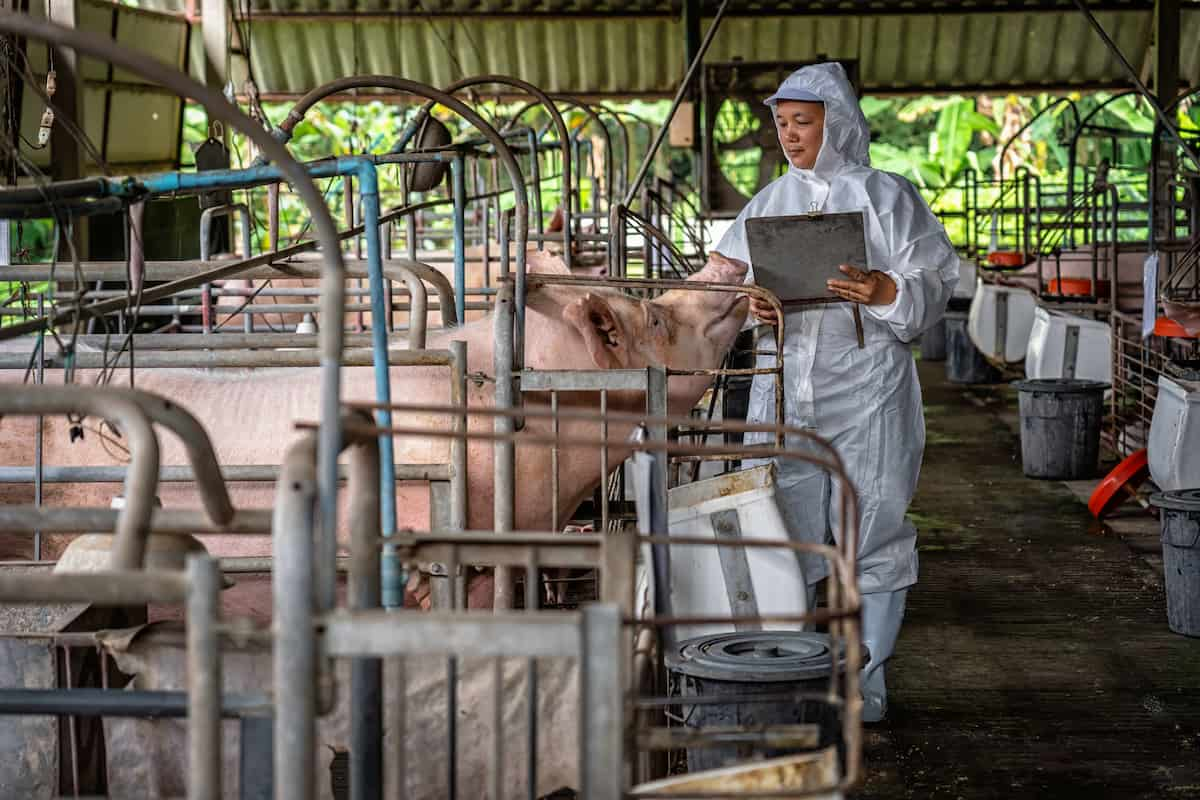Fly infestations on pig farms can lead to many problems, including spreading diseases, contaminating food, reducing productivity, and causing stress to animals and workers. Therefore, efficient fly management measures must be used. This article will explore the assessment of fly density on pig farms and biosecurity measures in pig farming and provide a comprehensive overview of strategies to control and manage fly populations.

How to Manage Fly Density on Pig Farms
Assessing Fly Density on Pig Farms
Visual Inspection
The first step in assessing fly density is conducting a thorough visual inspection of the farm. Walk through the pig housing, observing the walls, ceilings, and floors for signs of fly activity. Look for adult flies, maggots, and fly breeding areas like manure and spilled feed. Note areas with high concentrations of flies to target during control efforts.
Fly Monitoring Traps
Using fly monitoring traps is an effective method for quantifying fly populations. Place traps in strategic locations throughout the farm, such as near entrances, windows, and fly breeding sites. Sticky traps and baited traps are common choices. Check the traps regularly and record the number of flies caught to track the effectiveness of control measures.
Spot Cards
Spot cards are white index cards placed on walls and other surfaces throughout the pig housing. These cards help identify fly resting and breeding areas by showing fly specks (feces and regurgitated food). Replace and count the fly specks on the spot cards weekly to monitor changes in fly density and determine the success of control measures.
Strategies to Control Fly Density on Pig Farms
Sanitation and Waste Management
Proper sanitation and waste management are crucial in controlling fly populations. Flies breed in manure, spilled feed, and other organic matter, so regular cleaning is essential. Develop a routine to remove manure and clean up the spilled feed. Composting manure can help reduce fly breeding sites and provide valuable fertilizer for the farm. Additionally, ensure that waste storage areas are well-maintained and covered to prevent fly access.
Exclusion Methods
Preventing flies from entering pig housing is an effective way to reduce fly density. Install screens on windows, doors, and ventilation openings to keep flies out. Repair any holes or gaps in walls, roofs, and floors that could provide entry points for flies. Weatherstripping around doors can also help seal gaps and prevent fly entry.
Biological Control
Biological control involves using natural enemies to reduce fly populations. Parasitic wasps are commonly used to control flies in pig farms. These tiny wasps lay their eggs in fly pupae, preventing adult flies from emerging. Release the wasps in areas with high fly activity, and replenish the population as needed. Another biological control method is fly predators, such as beetles, which feed on fly larvae in manure. Introducing these insects to manure piles can help reduce fly breeding sites and control populations.
Chemical Control
Chemical control options include insecticides, baits, and larvicides. Insecticides can be applied as surface sprays, space sprays, or fogging treatments. Use insecticides selectively and according to label instructions to minimize the risk of resistance development. Rotate between different classes of insecticides to prevent resistance.
In case you missed it: Berkshire Pig Facts: Origin, Size, Physical Characteristics, Pros, and Cons

Baits can be placed in fly-active areas, providing an attractive food source laced with insecticide. Baits should be used in combination with other control methods and replaced regularly. Larvicides can be applied to manure and other breeding sites to kill fly larvae before they become adults. Use larvicides as part of an integrated pest management program and follow label instructions to ensure effective control and prevent resistance development.
Physical Control Methods
Physical control methods involve the use of traps and barriers to reducing fly populations. Sticky traps, baited traps, and electronic fly zappers are common options. Place these traps near fly-active areas and entry points to maximize their effectiveness. Regularly clean and maintain the traps to ensure they continue to work efficiently.
Cultural Control
Cultural control methods involve modifying farm practices to make the environment less suitable for fly breeding and survival. For example, maintaining proper ventilation and moisture levels can help reduce fly breeding sites. Keep food and water sources clean, and avoid leaving spilled feed and water to accumulate. Regularly inspect and maintain farm structures, ensuring that there are no areas where flies can easily breed.
Employee Education and Training
Educating farm workers about the importance of fly control and training them in best practices can significantly contribute to effective fly management. Ensure that all employees understand the risks associated with fly infestations and are familiar with the control methods and strategies used on the farm. Regular training sessions and updates on new control methods can help maintain awareness and promote a proactive approach to fly management.
Landscaping and Farm Layout
Designing and maintaining the farm’s layout with fly control in mind can help reduce fly populations. Keep vegetation well-trimmed around pig housing to discourage flies from breeding and minimize hiding places. Avoid placing manure piles and waste storage areas near pig housing, as they attract flies. Maintain proper drainage around the farm to prevent standing water, which can serve as a breeding site for some fly species.
Use of Repellents
Applying natural or synthetic repellents can help deter flies from entering pig housing or congregating in specific areas. Natural repellents, such as essential oils (e.g., eucalyptus, lavender, and citronella), can be applied to surfaces or diffused in the air. Synthetic repellents like pyrethroids can be used as a barrier treatment around pig housing. Always follow label instructions and use repellents in conjunction with other control methods.
Monitoring and Record-keeping
Ongoing monitoring of fly populations is essential to assess the success of control measures and make adjustments as needed. Use a combination of visual inspections, monitoring traps, and spot cards to track changes in fly density. Maintain accurate records of fly counts, control measures used, and their effectiveness. This information can help identify trends, pinpoint problem areas, and guide future control efforts.
In case you missed it: Duroc Pig Facts: Origin, Size, Physical Characteristics, Pros, and Cons

Conclusion
Managing fly density on pig farms is a critical aspect of maintaining a healthy and productive operation. By addressing the issue proactively, pig farmers can create a cleaner, healthier environment for their animals and workers.
- Feed Your Flock for Less: Top 10 Tips to Save on Chicken Feed
- Ultimate Guide to Ossabaw Island Hog: Breeding, Raising, Diet, and Care
- Hatching Answers: The Top 10 Reasons Your Chickens Aren’t Laying Eggs
- Eggs and Economics: Breaking Down the Cost of Raising Backyard Chickens
- Defend Your Greens: Proven Methods to Keep Iguanas Out of Your Garden
- Ultimate Guide to Cinnamon Queen Chicken: A Comprehensive Guide for Beginners
- Ultimate Guide to California Tan Chicken: Breeding, Raising, Diet, Egg-Production and Care
- Ultimate Guide to Marsh Daisy Chicken: Breeding, Raising, Diet, and Care
- 10 Types of Chicken Farming Businesses You Can Start for Profits